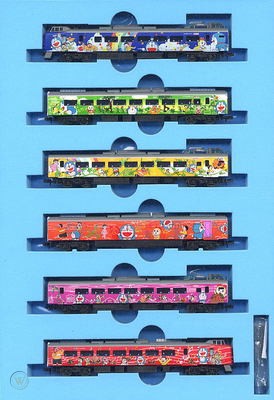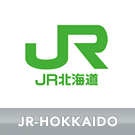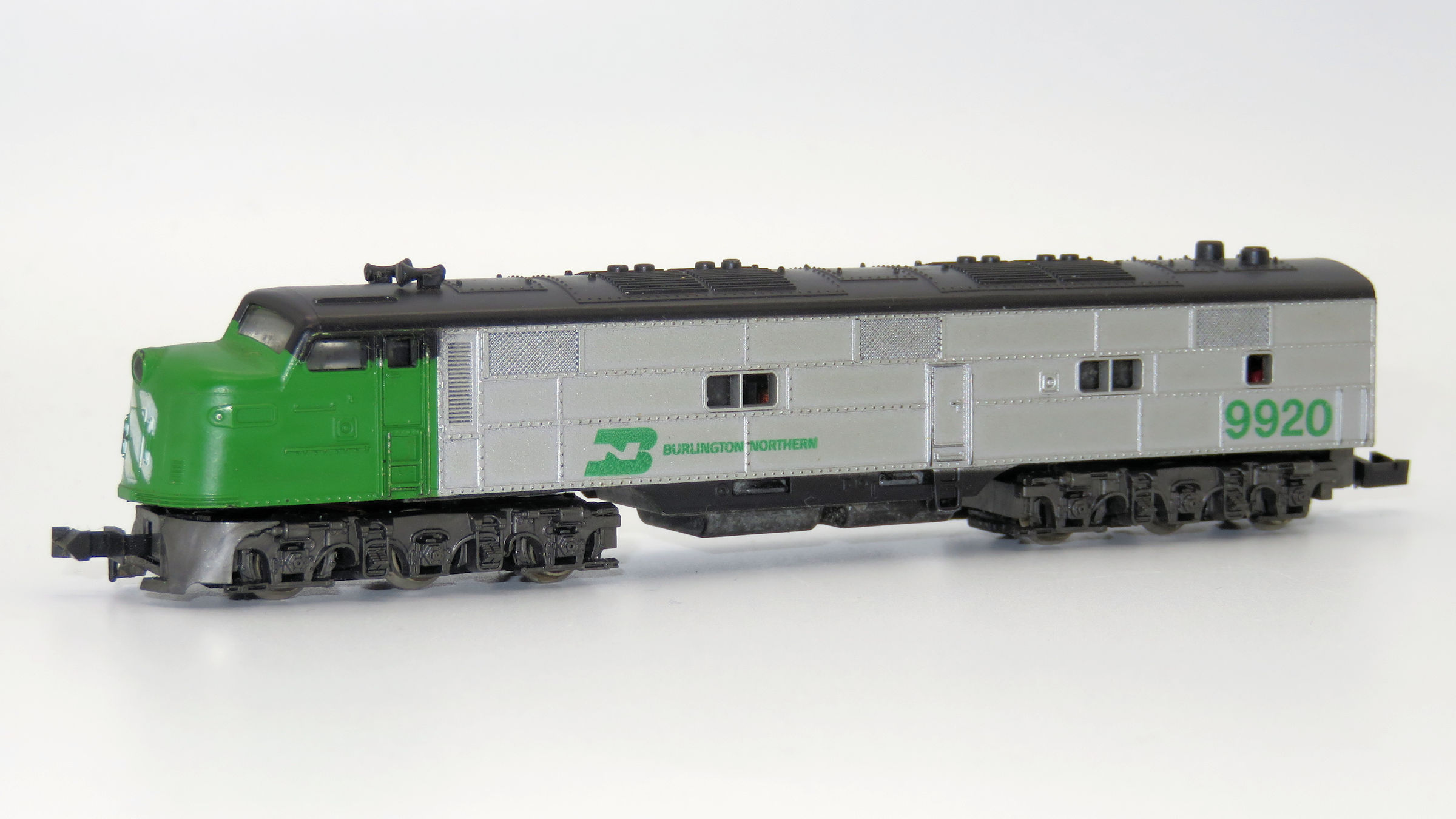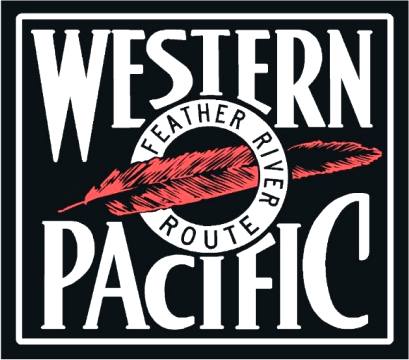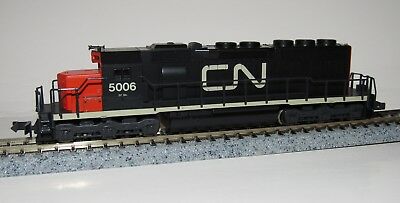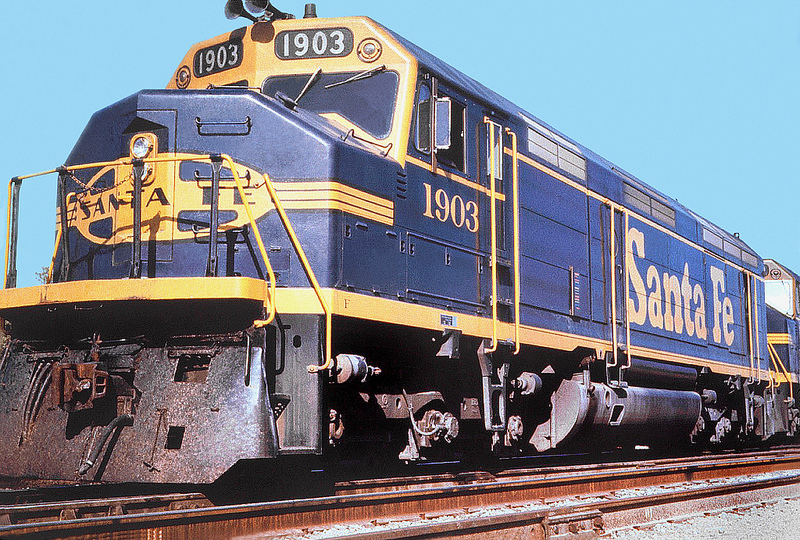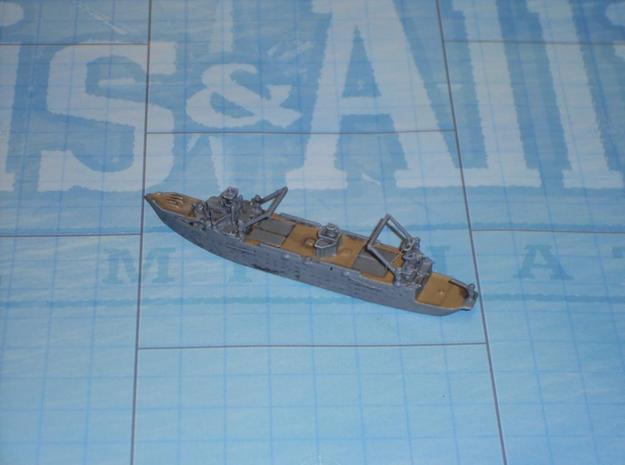Micro Ace - A0314 - 781 Series - Japan Railways Hokkaido
| Stock Number | A0314 |
| Original Retail Price | 23,000¥ |
| Brand | Micro Ace |
| Manufacturer | Micro Ace |
| Body Style | Micro-Ace Passenger Set |
| Image Provider's Website | Link |
| Prototype | 781 Series |
| Road or Company Name | Japan Railways Hokkaido (Details) |
| Reporting Marks | Doaremon |
| Paint Color(s) | Blue/Green/Yellow/Orange/Pink/Red |
| Print Color(s) | Red/White/Blue/Yellow |
| Paint Scheme | Doaremon |
| Additional Markings/Slogan | Doaremon |
| Coupler Type | Rapido Hook |
| Wheel Type | Nickel-Silver Plated Metal |
| Wheel Profile | Small Flange (Low Profile) |
| Multipack | Yes |
| Multipack Count | 6 |
| Series Name | 781 series |
| DCC Readiness | No |
| Release Date | 2004-07-19 |
| Item Category | Passenger Trains |
| Model Type | Electric |
| Model Subtype | EMU |
| Model Variety | 781 series |
| EAN/JAN/GTIN13 Number | 4968279112755 |
Specific Item Information:
Six (6) cars train set with 1 motorized car.
In 2003, sets L7 and L104 were reallocated to Hakodate depot and reformed to become 6-car set L7 for use on special Doraemon Undersea Train services between Hakodate and Yoshioka-Kaitei inside the undersea Seikan Tunnel from 19 July 2003. Each car was painted a different colour and decorated with Doraemon characters. This operated until August 2006. The set was subsequently scrapped together with the two stored cars from former set L104.
Comes with padded Case to store the set. Wonderful details and realistic design. With three (3) pantographs, intricate undercarriage coach car details, and a working head and tail lights (Car 1 & Car 6).
G0001 Room Light Wide Width Lamp Color LED (2 ea)
G0002 Room Light Wide Width Lamp Color LED (6 ea)
G0003 Room Light Wide Width White Color LED (2 ea)
G0004 Room Light Wide Width White Color LED (6 ea)
In 2003, sets L7 and L104 were reallocated to Hakodate depot and reformed to become 6-car set L7 for use on special Doraemon Undersea Train services between Hakodate and Yoshioka-Kaitei inside the undersea Seikan Tunnel from 19 July 2003. Each car was painted a different colour and decorated with Doraemon characters. This operated until August 2006. The set was subsequently scrapped together with the two stored cars from former set L104.
Comes with padded Case to store the set. Wonderful details and realistic design. With three (3) pantographs, intricate undercarriage coach car details, and a working head and tail lights (Car 1 & Car 6).
- Car 1: KuHa 780-7
- Car 2:MoHa 781-5
- Car 3:SaHa 780-5
- Car 4: MoHa 781-14 (M)
- Car 5: SaHa 780-14
- Car 6: KuMoHa 781-7
G0001 Room Light Wide Width Lamp Color LED (2 ea)
G0002 Room Light Wide Width Lamp Color LED (6 ea)
G0003 Room Light Wide Width White Color LED (2 ea)
G0004 Room Light Wide Width White Color LED (6 ea)
Road Name History:
The Hokkaido Railway Company (北海道旅客鉄道株式会社 Hokkaidō Ryokaku Tetsudō Kabushiki-gaisha) is one of the constituent companies of Japan Railways Group (JR Group), and is often referred to using its official abbreviation of JR Hokkaido (JR北海道 Jeiāru Hokkaidō). It operates intercity rail services in Hokkaido, Japan. The company introduced Kitaca, a smart card ticketing system, from autumn 2008.
At the time of its privatization in 1987, JR Hokkaido operated 21 railway lines totalling 3,176.6 kilometres (1,973.8 mi) of narrow-gauge (1,067 mm (3 ft 6 in)) track, as well as a ferry service to Aomori. Since then, that number has dwindled to just below 2,500 kilometres (1,600 mi), as unprofitable lines have been shut down or spun off (in the case of the Hokkaidō Chihoku Kōgen Railway). The ferry service has also been replaced by the Seikan Tunnel.
On 19 November 2016, JR Hokkaido's President announced plans to further rationalise its network by up to 1,237 km, or ~50% of the current network, including closure of the remaining section of the Rumoi Main Line (the Rumoi - Mashike section closed on 4 December 2016), the Shin-Yubari - Yubari section of the Sekisho Line, the non-electrified section of the Sassho Line and the Nemuro Line between Furano and Kami-Ochiai Junction. Other lines including the Sekihoku Main Line, Senmo Main Line, the Naroyo - Wakkanai section of the Soya Line and Kushiro - Nemuro section of the Nemuro Line are proposed for conversion to Third Sector operation, but if local governments are not agreeable, such sections will also face closure.
Hokkaido Railway's headquarters are in Chūō-ku, Sapporo.
From Wikipedia
At the time of its privatization in 1987, JR Hokkaido operated 21 railway lines totalling 3,176.6 kilometres (1,973.8 mi) of narrow-gauge (1,067 mm (3 ft 6 in)) track, as well as a ferry service to Aomori. Since then, that number has dwindled to just below 2,500 kilometres (1,600 mi), as unprofitable lines have been shut down or spun off (in the case of the Hokkaidō Chihoku Kōgen Railway). The ferry service has also been replaced by the Seikan Tunnel.
On 19 November 2016, JR Hokkaido's President announced plans to further rationalise its network by up to 1,237 km, or ~50% of the current network, including closure of the remaining section of the Rumoi Main Line (the Rumoi - Mashike section closed on 4 December 2016), the Shin-Yubari - Yubari section of the Sekisho Line, the non-electrified section of the Sassho Line and the Nemuro Line between Furano and Kami-Ochiai Junction. Other lines including the Sekihoku Main Line, Senmo Main Line, the Naroyo - Wakkanai section of the Soya Line and Kushiro - Nemuro section of the Nemuro Line are proposed for conversion to Third Sector operation, but if local governments are not agreeable, such sections will also face closure.
Hokkaido Railway's headquarters are in Chūō-ku, Sapporo.
From Wikipedia
Brand/Importer Information:
Micro Ace Co., Ltd. is a railroad model / plastic model maker headquartered in Suzaki, Saitama Prefecture.
Founded in 1963 as Arii Manufacturing Co., Ltd. (Arii), the company produced plastic models. In 1980 it entered the N-scale model train business and withdrew after a while. It reentered N-scale model train in 1996, with production in China.
On 10th June 2004, this business was transferred to the newly established subsidiary Micro Ace Co., Ltd., and "Micro Ace" became the new company name.
Read more (in Japanese) on Wikipedia.
Founded in 1963 as Arii Manufacturing Co., Ltd. (Arii), the company produced plastic models. In 1980 it entered the N-scale model train business and withdrew after a while. It reentered N-scale model train in 1996, with production in China.
On 10th June 2004, this business was transferred to the newly established subsidiary Micro Ace Co., Ltd., and "Micro Ace" became the new company name.
Read more (in Japanese) on Wikipedia.
Item created by: Mokei Tetsu
on 2017-09-04 12:13:22
Last edited by: CNW400 on 2020-06-10 12:56:15
If you see errors or missing data in this entry, please feel free to log in and edit it. Anyone with a Gmail account can log in instantly.
Last edited by: CNW400 on 2020-06-10 12:56:15
If you see errors or missing data in this entry, please feel free to log in and edit it. Anyone with a Gmail account can log in instantly.


